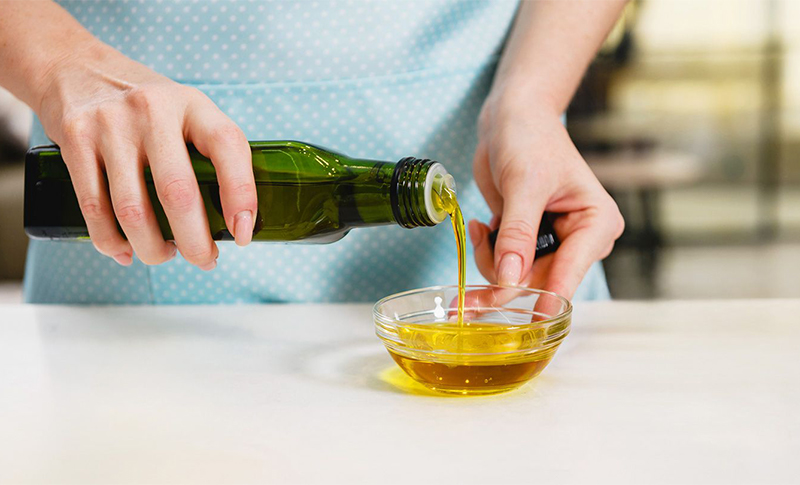Myeloperoxidase (MPO), a heme protein secreted by activated leukocytes, plays an important role in the host defense at the sites of inflammation by the production of halogenating molecules such as hypochlorous acid (HOCl) and hypobromous acid (HOBr).1,2) However,
excessive halogenating species also modify the host’s biomacromolecules including DNA, proteins, and lipids.3) Although halogenated adducts in DNA and proteins were detected in the liver of lipopolysaccha�ride (LPS)-treated mice, we have recently identified the halogenated adducts of nucleotides (8-halogenated dGs) as earlier inflammatory biomarkers.4) Thus, the high concentrations of MPO-related halogenating species observed under inflammatory conditions are postulated to result in damage to the host tissue and contribute to the progression of inflammatory-related diseases includ�ing cancer, kidney disease, and atherosclerosis.5) Excessive exposure to the ultraviolet (UV) rays in sunlight is responsible for the oxidative damages to skin, resulting in sunburn, photoaging, and skin can�cer.6) Although UV-B is a minor component of UV (~4%), it directly causes inflammation by producing reactive oxygen species (ROS) and reducing antioxi�dants in the skin.7) In fact, uncontrolled release of ROS by UV-B irradiation, which causes oxidative DNA base damage, such as 8-hydroxy-2′-deoxyguanosine (8-
OHdG) formation,8) is involved in the pathogenesis of human skin disorders. The use of anti-inflammatory agents is considered to be a reasonable approach to prevent UV-B-induced carcinogenesis. Coprinus comatus, known as a shaggy ink cap, is an edible mushroom commonly found all over the world. It also contains a high amount of ergothioneine (EGT), a natural water-soluble amino acid that human cannot synthesize. EGT has been reported to show several physiological activities, including anti-cancer, anti-oxi�dant, immunomodulatory, and hypoglycemic activi�ties.9) In human, EGT is abundantly accumulated in the erythrocytes, bone marrow, liver, kidney, seminal fluid, and especially highly distributed in the small intes�tine.9) However, the modulatory effects of EGT on inflammation are currently unclear. In this study, to explore the possibility of EGT as an anti-inflammatory food material, we examined theprotective effect of the EGT-containing mushroom, C. comatus, on DNA halogenation in both in vitro and in vivo. Our results show the possibility that EGT is one of the effective food factors to protect humans from UV-B-induced inflammatory damage.
Results
Since an early inflammation marker, 8-BrdG, was produced through the reaction of dG and HOBr gener�ated from the MPO-H2O2-Cl− /Br− system,2) inhibition of the 8-BrdG formation could result from either inhibi�tion of MPO activity or the scavenging of HOBr. Thus, we examined the effect of the Coprinus (C. comatus) extract on MPO activity, measured as the amount of dityrosine derived from the reaction of MPO-H2O2-L�tyrosine system.11) As shown in Fig. 1(A), the Copri�nus extract dose-dependently inhibited MPO-dependent formation of dityrosine. Among the four mushroom extracts (C. comatus, P. comucopiae, L. edodes, and G. frondosa), Coprinus was the most effective mush�
room extract to inhibit MPO activity (Fig. 1(B)). Since the Coprinus extract contains the highest amount of EGT compared to the other tested mushrooms, the inhi�bitory effect of EGT was examined and compared to that of L-histidine having a structure similar to EGT. As shown in Fig. 1(C) and (D), EGT significantly inhibited MPO activity even at the concentration of 1 µM. The inhibitory effect of EGT was dose-depen�dent, whereas L-histidine showed no inhibition. To examine the effect of EGT on the HOBr-depen�dent 8-BrdG formation, we performed a competitive
ELISA using an 8-halogenated dG-specific antibody (mAb8B3). As shown in Fig. 2(A) and (B), not only the Coprinus extract, but also EGT inhibited the halo�genation of dG in a dose-dependent manner. Histidine also showed a significant inhibition against the HOBr�dependent 8-BrdG formation (Fig. 2(A)), which was similar to that of EGT. The efficacy of EGT as a scav�enger of HOBr was evaluated by comparison with the major antioxidants such as GSH and ascorbic acid. The inhibitory effect of EGT at 0.5 mM was 2.1-fold higher than that of GSH, and 1.6-fold greater than that of ascorbic acid under the same conditions (Fig. 2(C)). To evaluate the in vivo anti-inflammatory potencies of the Coprinus extract, the UV-B-irradiated mouse skin model was initially used. After UV-B irradiation for 90 days, the histopathological changes, such as the increase in the thickness of the epidermis and accumulation of neutrophils, were observed in thedorsal skin (Fig. 3(A) and (B)) and found consistent with previous reports.12) As shown in Fig. 3(C), the oral administration of the Coprinus extract during irradiation inhibited these changes to the control level (Fig. 3(A)). To confirm the potential of the Coprinus extract as an inhibitor of the HOBr-induced DNA dam�
age in vivo, an immunohistochemical analysis using the 8-halogenated dG-specific antibody (mAb8B3) was per�formed. As shown in Fig. 3(D) and (E), an increase in the MPO-positive immunostaining was observed in the skin tissue after UV-B irradiation compared to the non�
irradiated control group, which is closely correlated to the infiltration of neutrophils (Fig. 3(A) and (B)). The generation of 8-BrdG was also obviously observed in the dermis of the UV-B-irradiated mice (Fig. 3(H)). The administration of the Coprinus extract resulted in the reduction of both the MPO and 8-BrdG staining in the dermis to the control level (Fig. 3(F) and (I)).
Discussion
In this study, we confirmed the inhibitory effects of EGT and the EGT-containing mushroom extract on the MPO- or HOBr-induced halogenation in vitro. EGT is a natural sulfur-containing amino acid, synthesized by microorganisms in the soil and is absorbed into foods
such as mushrooms.13) Particularly, high levels of EGT are detected in some foods including not only certain species of mushrooms, beans, and grains, but also animal meat.13) In addition, EGT has been used as an ingredient in foods, supplements, and cosmetics as well as a pharmaceutical additive due to its high safety; for example, EGT showed no toxicity even at 1500 mg/kg in the in vivo mouse mammalian erythrocyte micronu�cleus test.14) Among the four representative extracts of mushrooms, the Coprinus extract showed the strongest
MPO inhibitory activity correlated with its highest amount of EGT. The amount of EGT contained in the Coprinus extract was 1% of the extract (Fig. 1(B)), which accounts for 90% of the total inhibitory activity of the Coprinus extract against MPO activity (Fig. 1(A) and (D)). Taken together, EGT and the EGT-containing Coprinus extract could be applied as potential inhibitors against inflammation-derived DNA damage in vivo, in addition to the antioxidant function. The in vitro data suggest that the possible inhibitory mechanisms of EGT are both the direct inhibition of MPO (Fig. 1) and the scavenging of HOBr (Fig. 2). Some flavonoids, such as quercetin, inhibit the MPO activity, possibly through the binding to MPO as sub�strates and their oxidization by MPO.15) Kawai et al. also reported that tea catechins inhibited DNA halo�genation by the scavenging of HOCl, resulting in the formation of chlorinated catechins.16) In this study, EGT showed a stronger inhibitory activity against the 8-BrdG formation than GSH, one of the popular antioxidants with a sulfur atom. EGT exists as a tautomer between its thiol and thione forms at physiological condition,9) which may contribute to its stability in contrast to GSH that is easily auto-oxidized.
Therefore, EGT could act as a more stable cytoprotec�tant inhibiting DNA halogenation than GSH. Hypo�halous acids react readily with amine group to form haloamines.17) Chloramines of free α-amino acids readily eliminate HCl and then form an imine, an unstable intermediate subsequently to the aldehyde.17) Hypohalous acids also react with thiol group to form disulfide.17) The fact that EGT has a trimethylammonium group supports the assumption thata plausible target for HOBr in EGT might be a
tautomeric thiol group.
In addition to an in vitro study, we initially observed the possible inhibitory effects of an extract from a mushroom, C. comatus, on the UV-B induced halo�genation of dG in vivo. In humans, EGT has been reported to distribute in cells and various organs such as the erythrocytes, bone marrow, liver, kidney, and eyes.9) Although EGT is impermeable to plasma mem�branes, EGT is accumulated in organs and condensed
up to a few millimolar through the EGT-specific trans�porter, carnitine/organic cation transporter 1 (OCTN1).18) In addition, we observed that the treat�ment of the Coprinus extract inhibited the UV-B-in�duced halogenation of DNA and histopathological changes in vivo. Since the concentration of EGT in organs has been reported to reach up to 500 µM,19) the direct effects of EGT on the inflammatory halogenation are quite feasible in vivo. On the other hand, anti-in- flammatory effect of EGT or other constituents in the Coprinus extract could not be ruled out in the mecha�nism underlying inhibition of the DNA halogenation in mouse skin. Indeed, EGT was reported to inhibit acute lung inflammation in cytokine insufflated rats.20) Therefore, further study is needed to clarify how the Coprinus extract modulates UV-B-induced neutrophil
infiltration and how DNA halogenation is involved in the chronic inflammation development. In summary, this study indicated the possibility that EGT in the C. comatus extract protects UV-B-induced DNA damage by inhibiting MPO activity and scavenging halogenous species. EGT at physiological concentrations is possible for clinical applications as an anti-inflamma�
tory agent for not only UV-
 Plant-Based Diet May Slow Prostate Cancer Progression
Plant-Based Diet May Slow Prostate Cancer Progression
 Olive Oil Tied to Lower Risk of Dementia-Related Death
Olive Oil Tied to Lower Risk of Dementia-Related Death
 Certain Sleeping Patterns Linked to Greater Disease Risk
Certain Sleeping Patterns Linked to Greater Disease Risk
 Does Losing Weight Lower Cholesterol?
Does Losing Weight Lower Cholesterol?